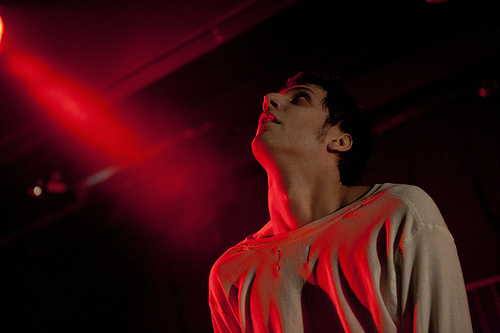Photosensitive epilepsy is a type of epilepsy in which seizures occur as a result of exposure to flickering lights or flashes of light of varied wavelengths, colors, and patterns. Photosensitive epilepsy symptoms are similar to those seen in other types of epilepsy.

Photosensitive Epilepsy Symptoms
Here are some characteristics of photosensitive epilepsy.
Some Basic Information About Photosensitive Epilepsy Symptoms
- A typical case of photosensitive epilepsy can occur during something as routine as watching television or playing video games for longs hours. In such cases, the seizure episode is triggered by the light flickers in the television or gaming screen.
- Usually, children and adolescents are affected by photosensitive epilepsy
- Individuals with a history of exposure to bright, high contrast flickering lights before an epileptic attack are more susceptible to photosensitive epilepsy.
- In some cases of the condition, the individual may experience seizures with eyes closed and in some cases, he may experience them with open eyes. Even when the eyes are closed, external lights cannot be completely occluded. Flashes of light passing through closed eyelids can also precipitate seizures.
Some Common Photosensitive Epilepsy Symptoms
- Muscles become stiff due to contractions
- Epileptic cry – A loud moan, caused by a forceful burst of air from the lungs as a result of the vigorous contractions of respiratory muscles, is known as an epileptic cry. It signifies the onset of an epileptic attack.
- The individual may collapse of the ground (and in some cases acquire a head injury)
- Impaired consciousness
- Temporary loss of control over the bladder or the stools
- A tongue injury in case the tongue is caught in between the jaws during the seizure
An Important Warning Sign That Marks The Onset Of A Seizure Episode
A subjective feeling of abnormal aural, visual, olfactory (of the nose), or tactile sensations just before an epileptic seizure is called as an aura. Experiencing such an aura during exposure to bright flickering lights should warn you that an attack of epilepsy is about to start within next few minutes.
Patterns of Seizures in Photosensitive Epilepsy
The pattern and nature of the seizures may vary from person to person. They may be generalized tonic-clonic seizures or absence seizures. The seizure episodes may vary from simple to intense, as well.
Generalized Tonic-Clonic Seizures
In generalized tonic-clonic seizures, alternating, often forceful, contractions and relaxations of the muscles occur throughout the body. This phase can last for up to 5 minutes.
Partial/Focal Seizures
In partial seizure episodes, the muscles of a certain part of the body are involved. If the electrical activity spreads to other areas of brain, the seizures may become generalized.
Ictal Phase
The actual phase when the seizure is occurring is called the ictal phase. The type of seizure may vary depending upon the level of neuronal excitation and its spread in the brain. Localized focus of neuronal activity in the brain causes focal seizures (involving only a part of the body), while widespread electrical activation to various parts of the brain results in generalized tonic-clonic seizures.
Postictal Phase
The phase following a seizure episode, the postictal phase, lasts for a few minutes. Some symptoms commonly seen during this phase are:
- Short-term memory loss
- Heavy pain in the head and the muscles of body
- Confused behavior
- Signs of exhaustion
EEG (Electroencephalogram)
EEG indicates the electrical changes that take place continuously inside the brain. An EEG involves placing multiple electrodes all over the head of the patient and recording the electrical potentials coming from different parts of brain.
Photosensitive epilepsy symptoms are observed to identify the condition, which can then be confirmed by observing the changes in the EEG wave patterns while the person is being exposed to flickering light.